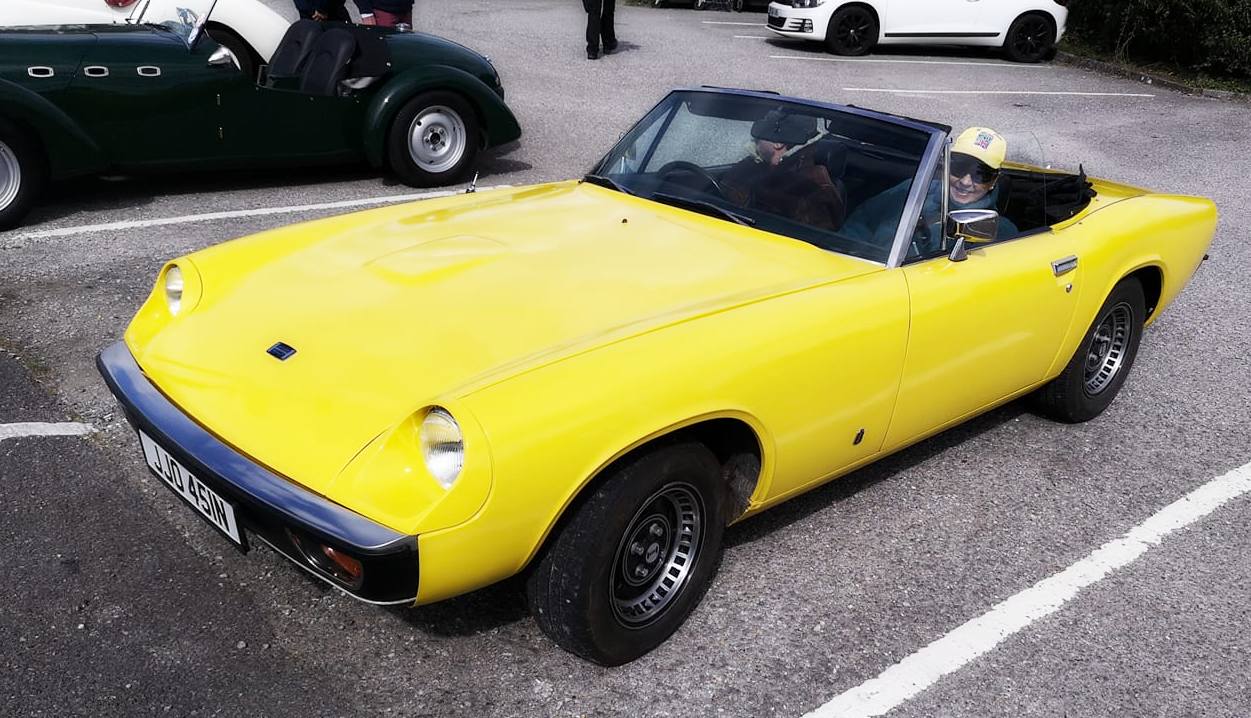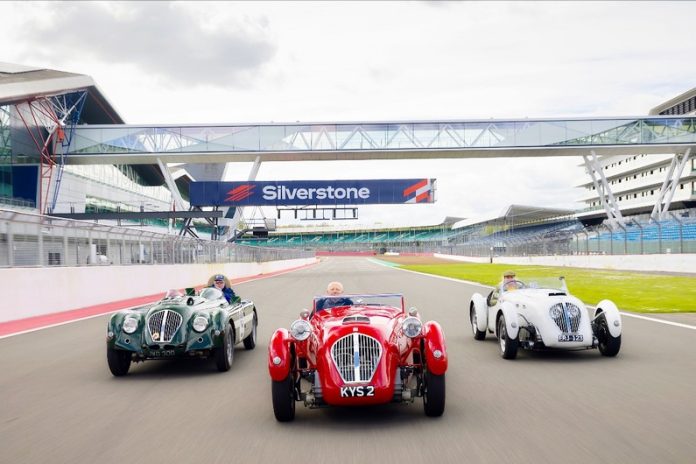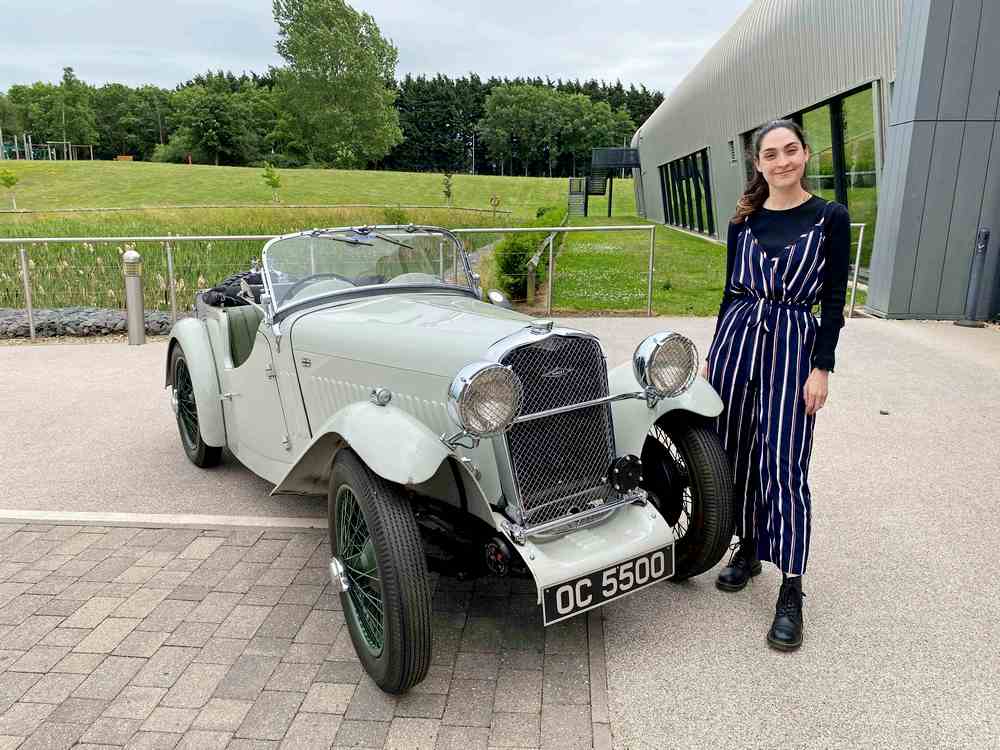Introduction
Before I get into the article itself I feel that I should make an admission; the Jensen-Healey’s 50th Anniversary (launched at the Geneva Motor show, March 1972) had completely escaped me, it was only by visiting the AHC GB’s website to see what the club is doing for the Healey 100’s 70th Anniversary that I saw a reference to the Jensen-Healey celebration. It is invertible now that every year that passes will see the celebration of a significant anniversary of one great car or another. Earlier this year my attention was drawn to the celebrations planned for the centenary of one of the noblest and influential cars of all time (i.m.o.), the Austin Seven. Other notable anniversaries this year – AC Cobra (1962), also launched in 1962 – Ferrari 250GT, Lotus Elan, MGB, and Triumph Spitfire. Sharing their half-centuries with the Jensen Healey are – Fiat X1/9, Porsche 911 Carrera 2.7 RS and Renault 5.
With those anniversaries being celebrated by the respective owners’ clubs I may be excused for missing Jensen Healey, which in volume terms is a relatively small fish in the automotive pond. O.K., I admit, it’s a poor excuse, let me make up for it here –
The Concept
How did the concept of a Jensen-Healey sportscar evolve? The superficial belief is that Kjel Qvale (KQ) (born in Norway in 1919 moving to the U.S., with his family, in 1929), owner of British Motor Car Distributors Ltd., based in San Fransico, was sorely missing the sales of the Austin Healey 3000 that British Leyland’s Donald Stokes had unceremoniously axed in 1967. He needed to find a replacement and thought that Jensen Motors Ltd., West Bromwich, builders of the “Big Healey” bodies from inception, would have the ability and capacity to manufacture a replacement for the Austin Healey 3000. With that ambition in focus, in 1970 he bought a majority shareholding in Jensen from William Brandt & Sons Investment Bankers. As part of his plan, he soon appointed Donald Healey as chairman of Jensen Motors Ltd. Donald would give his illustrious name to the new car that was being planned. Donald and his family were also missing the royalty income from the Austin cars that he had conceived and carried his name, so, this was a very logical and acceptable turn of events.
The above story, which many accepted, including me before becoming involved with the Healey Motor Company Archive held by the Warwickshire County Record Office (WCRO), certainly contains most of the key elements. However, the one thing that it does not convey is the fact that Geoff Healey, supported, in principle, by his father Donald, who by this time was living back in Cornwall, had been designing a replacement for the AH 3000 well before the Jensen deal. The archive holds correspondence between KQ and DMH concerning detailed aspects of the car that the Healeys had been designing, particularly on how to bring it into production. The car would have been badged ‘Healey’ (see the badge design below), there was no question of a Jensen involvement at that stage, 1969.
It was at a later stage when it was realised that Jensen, with its previous experience of building painted and trimmed AH 100 > 3000 bodies, could be a possible candidate for building this new Healey sports car. Things moved rapidly after that, leading to KQ buying into Jensen Motors. It is important to understand that, at that point, it was the Healey X500 design, using Vauxhall engine/transmission and suspension components, that was being considered for production.
The development stage
From reading all the contemporary documents found in the Archive plus other material found on the internet, it can be concluded that from the time that KQ first contacted DMH in 1969 and the launch of the Jensen-Healey sports car at the Geneva Motor Show in March 1972 (it had originally been planned to launch it at the London Motor Show in October 1971 but delays in obtaining key components scuppered that plan) was one of the most frenzied periods ever experienced in the British Motor Industry. During that period the body design changed three times, from the Healey designed X500 via a Huge Poole design to the ultimate William Towns modification to the Poole design.
Whilst all that was going on work on the engine front was no less frenetic and harrowing. It was soon realised that the Vauxhall 2.0 Ltr. slant four, (it was the slant of this engine which gave X500 its low, aerodynamically efficient bonnet line) in a specification that compiled with U.S. Federal emission laws, would not provide the required performance, so, the hunt was on to find a suitable alternative. BMW, Ford, Mazda and Simca 4 and 6-cyl. engines were all considered at one time or the other. Fortunately (? – I add the question mark to reflect the consequences of the final decision) there was a parallel development in the British motor industry, Colin Chapman, of Lotus, had been developing an engine that had a very similar design to the Vauxhall engine but using a DOHC cylinder head. In fact, for various reasons, Lotus’ development of their engine had stalled but the appearance of the Vauxhall engine helped to reignite the Lotus 900 series engine development. Lotus used Vauxhall engine cast iron blocks (the production 907 engines had both blocks and head cast in aluminium) as slaves in the 900 series engine development. It is important to understand that, although they had common features, the Vauxhall engine and the Lotus engine were individually unique. Nevertheless, Jensen got wind of the development and saw the Lotus 907 engine as the answer to their prayers; Kjell Qvale soon struck a deal with Colin Chapman for Lotus to produce the Jensen-Healey engine. Disastrously, to keep the price down, Qvale agreed to take the engine without any warranty costs being chargeable to Lotus; a decision, the consequences of which, will be part of curriculums taught in business schools forever more!
The Vauxhall gearbox was not considered robust enough for use in the Jensen-Healey, so, Kevin Beattie, Jensen’s Cheif Engineer, contacted his friends at Rootes, where he had been a ‘Pupil’ and a manager at their Australian facility, to see if it was possible for them to supply gearboxes used by the Sunbeam Rapier H120 car. Rootes agreed that it was possible and a deal was struck at a favourable cost to Jensen. To keep costs as low as possible, Vauxhall steering, suspension and braking components were retained from the original X500 design.
Production
I am not going to spend too much time and energy on this very complex and tortuous part of the Jensen-Healey story, it’s not pretty! Strangely, for a relatively low volume car, this part of the J-H history is all too well known, particularly the problems caused by using an underdeveloped Lotus 907 engine. Britain, at that time and particularly in the motor industry, was going through a troublesome period of industrial disruption. Jensen was certainly not immune, a number of ex Austin employees had been recruited to produce the Jensen-Healey. They were good workers but at Austin they had become accustomed to having robust Union representation, something that they brought with them to Jensen. Enough said!
The 1973 ‘fuel crisis had a serious impact on Jensen’s fortunes, sales of both the Interceptor and Jensen-Healey were adversely affected. Sales and therefore production of the latter did not come anywhere near the figures that had been forecast.
An Overview
“Hindsight is a wonderful thing” is one of the greatest truisms in the English language, it certainly has its place in the Jensen-Healey story. My take on it, as a former Jensen employee (I had left well before the J-H period), is this –
- KQ’s ambition was too great and did not have the necessary experience of running a manufacturing operation. To make matters worse, his management style lay in the ‘autocratic’ spectrum.
- The gestation period, at a time when CADCAM and other such aids were not available, was far too short.
- External factors such as the ‘oil crisis’ and industrial disruption had a severe negative effect on the J-H’s prospects.
All that sounds very negative and it is a sad fact that Jensen-Healey cars have had to live with that negativity for most of their existence. It is my perception that they are emerging from that period now, owners and prospective owners are beginning to realise how basically right the car was and is. After all, it was conceived by the same family that had conceived the Healey 100 and embodies all the key elements of that design, exciting performance, good road holding, affordable and above all enormous fun to drive.
By the time the Mk.II was introduced in August 1973, most of the production and engineering problems had been solved and the changes introduce made the J-H a much nicer car. Unfortunately, like many cars before and since, the initial poor reputation was hard to overcome. The ‘GT’ version, launched in 1975, sold and badged as a Jensen, not a Jensen-Healey, was and is a delightful car, by any standards. KQ saw it as a smaller sister to the Interceptor thereby moving it “up market”; that is why he dropped Healey from the name, a decision that did not please Donald and Geoff, causing them to resign from the Jensen Board of Directors.
Most of the cars that come up for sale now have been “sorted” and can be enjoyed as their originators intended. At the other end of the spectrum are those cars that have been totally neglected, these offer, to those who have the ability and interest, an opportunity to create a “hobby” car that will bring great pleasure throughout the restoration period and beyond. The availability of parts should not be a problem.
A personal observation – I prefer the Healey X500 design to the KQ inspired “conservative” design that went into production. I think that it is academic to ponder whether the X500 would have had a broader appeal to the buying public; had it gone into production it would have suffered all the same problems as the adopted design. The only thing that could be said is that if that design had been accepted in the first place more time would have been available to “get it right” for launch.
Jensen Healey – a very successful racing car!
One other very positive thing that should be told about the Jensen-Healey, is its racing success. –
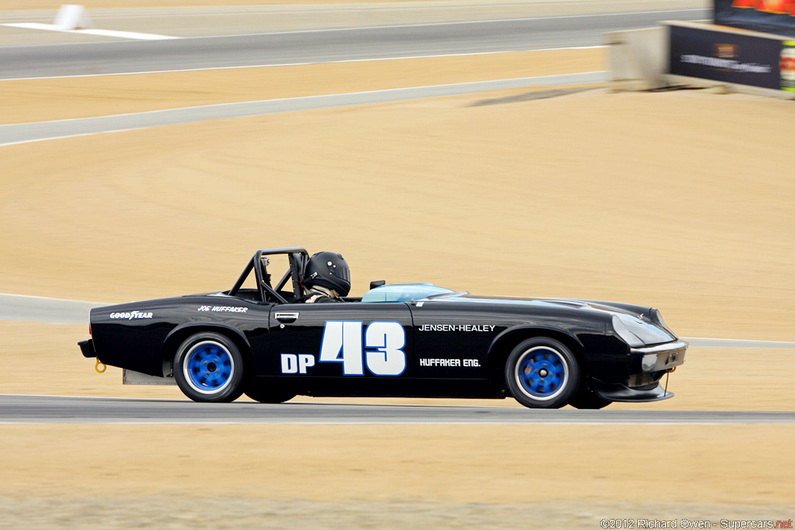
In 1973, Joe Huffaker, head of his eponymous engineering company based in San Rafael, CA., converted five Jensen-Healeys for club racing. Specifically, they were entered into the Group D – Production category of the SCCA series. Over the course of the 1973 season, Lee Mueller became the D-Production champion and the Jensen-Healey was victorious in its first season as a race car! The regulations, at that time, allowed engine modifications, Huffaker put his skills to full use in tuning the J-Hs Lotus DOHC engine, raising the standard engine’s 140 bhp to close to 200 bhp. The Vauxhall suspension was kept virtually standard except for the fitting of Koni shock absorbers and adjustable roll bars. A manual rack and pinion steering unit replaced the standard power-assisted one. The J-H went on to further successes in that period, in fact, they were champions in this class an incredible five times!
Even today Jensen Healeys continue to achieve success in HSCC historic sportscar racing around the world but particularly in the U.S.A. and U.K.
The Story in Pictures
Most of the following photographs are from the Healey Motor Company Archive owned by the Warwickshire County Record Office (WCRO).
The Healey X500 project











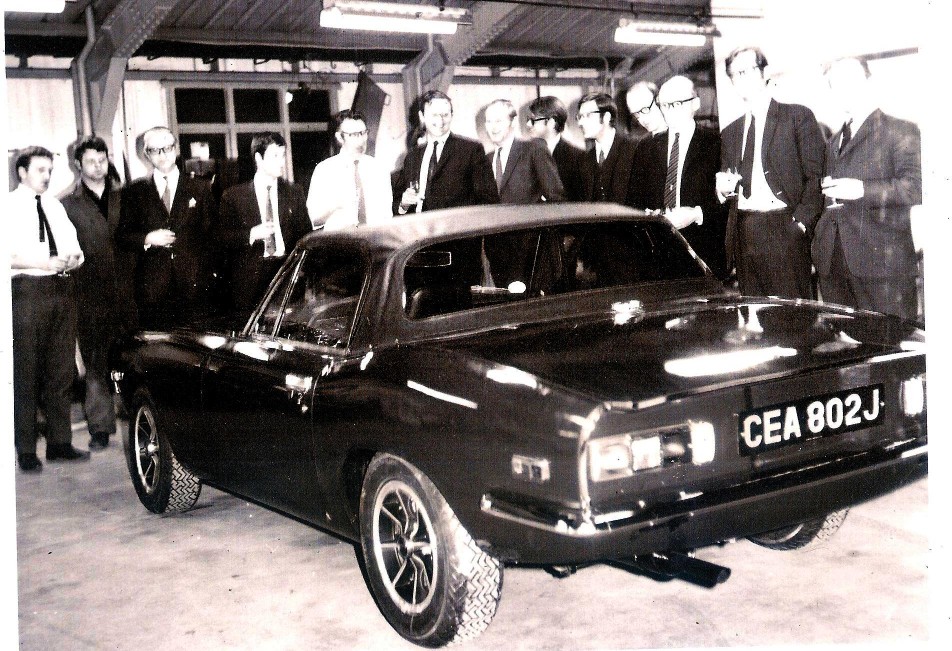
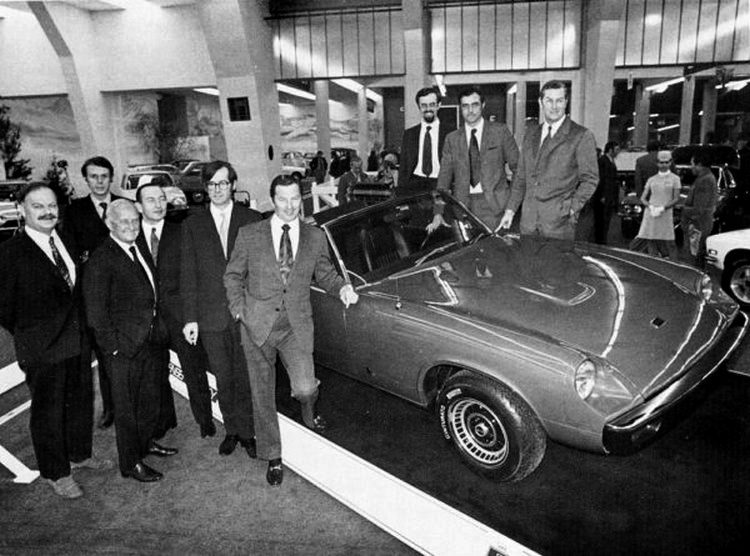
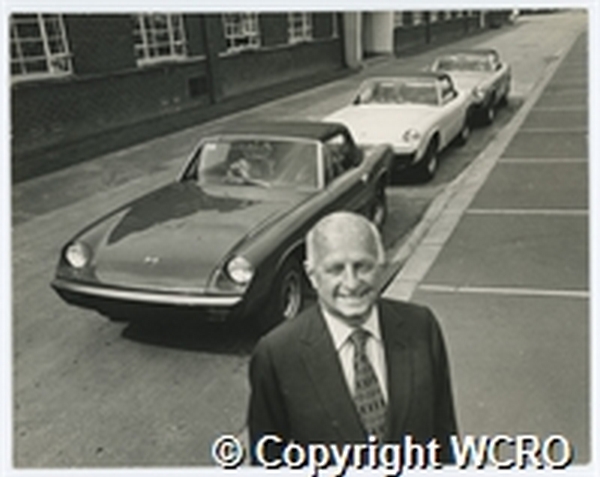
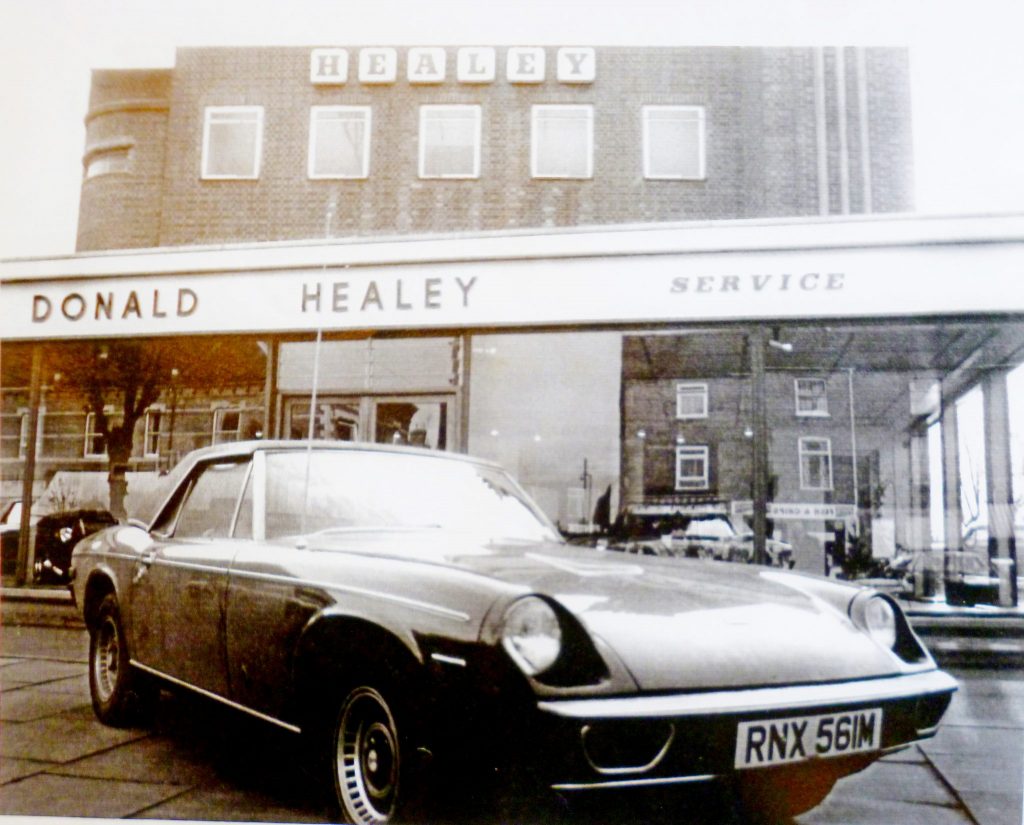
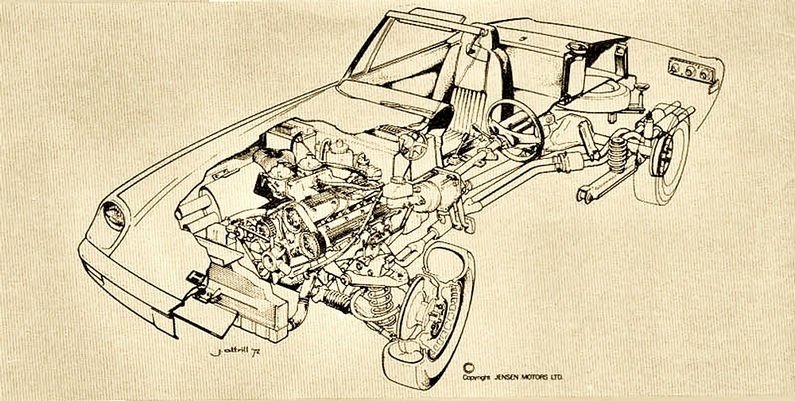
That’s all folks! I hope that I have been able to provide you with a little more information on this basically sound car that had such a difficult birth.
Nick
© carsceneinternational.com This copyright applies to both the text and all the photographs shown in this post. The copyright for photographs marked ** is held by the WCRO. For further information please contact info@carsceneinternational.com


